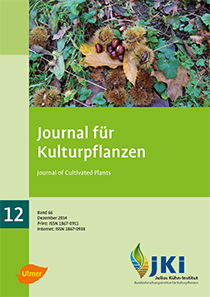New disease on red flowering horse chestnut (<em>Aesculus</em> x <em>carnea</em> Hayne) and the molecular identification of the involved pathogens
Keywords:
Aesculus × carnea, new disease, Pseudomonas syringae pv. aesculi, Flammulina velutipes, Pleurotus ostreatus, Bjerkandera adusta, Chondrostereum purpureum, ascomycetes, rDNA-ITSAbstract
A so far unknown disease which is found on red flowering horse chestnut (Aesculus × carnea Hayne) in the north-west of Germany has been investigated. It is characterized by the presence of fruiting bodies of Flammulina velutipes (Curtis) Singer and Pleurotus ostreatus (Jacq. ex Fr.) Kummer, able to cause breakage of branches and stems by white rot. Additional infection by Pseudomonas syringae pv. aesculi, and cracks of the bark are found.
To get detailed knowledge of the disease, samples were taken from cross sections of four decayed red flowering horse chestnut stems. The investigation of individual tissues across the stem enables the assignment of the pathogens to the new disease. Sequencing of the rDNA-ITS identified F. velutipes and P. ostreatus, Bjerkandera adusta (Willd. ex Fr.) Karst. and Chondrostereum purpureum (Pers. ex Fr.) Pouzar, four white rot fungi, as main pathogens and some ascomycetes in the infected and decaying stem tissues.
Our studies revealed the co-appearance of different basidiomycetes and ascomycetes in decaying tissue zones which emphasizes the complexity of the disease. It is also the first proof of involvement of F. velutipes as a parasite on red flowering horse chestnut. In addition, for the first time, Pseudomonas syringae pv. aesculi was detected in the inner bark and within the secondary xylem of natural infected red flowering horse chestnut.
DOI: 10.5073/JfK.2014.12.03, https://doi.org/10.5073/JfK.2014.12.03
Published
Issue
Section
License
The content of the journal is licensed under the Creative Commons Attribution 4.0 License. Any user is free to share and adapt (remix, transform, build upon) the content as long as the original publication is attributed (authors, title, year, journal, issue, pages).
The copyright of the published work remains with the authors. The authors grant the Journal of Cultivated Plants, the Julius Kühn-Institut and the OpenAgrar repository the non-exclusive right to distribute and exploit the work.







